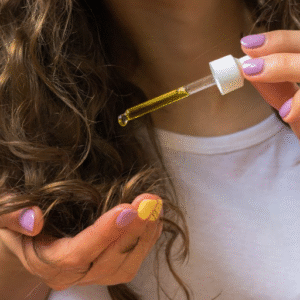If you desire really healthy, luscious hair, it must receive more care than just washing and conditioning. Hair nourishment begins with the proper nourishment. Deep oiling, a very old but time-tested method of hair rejuvenation probably one of the simplest yet most solid solutions to many hair problems: dryness, frizzing, and absence of shine. This blog post will reveal the deep oiling secrets by considering how the treatment works, the best choice of oils, and a stepwise procedure of deep oiling for overnight hair transformation. Whether one is fighting damaged hair or simply glistening with enhanced natural shine, this article provides all the tricks and clues one can think of to unleash the entire bloom of his/her hair care program.
What Is Deep Oiling and How Does It Benefit Your Hair?
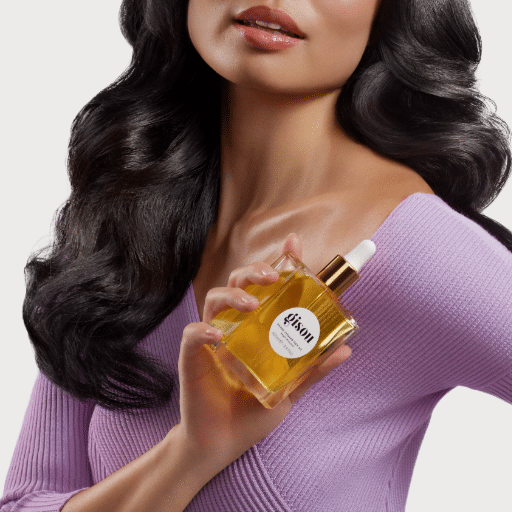
Deep oiling is a technique in hair care, whereby generous amounts of oil are applied to the scalp and hair strands for nourishment and hydration. The oil sits inside the hair shaft, supplying the needed nutrients and getting moisture back into dry or damaged hair, enhancing resilience, diminishing breakage, and resisting frizz, thereby improving the look and shine of the hair. In addition to this, oil is massaged into the scalp, which also enhances blood circulation and supports hair growth, thus making it paramount that you get such a treatment on a regular basis for strong, lustrous locks.
Understanding the Basics of Deep Oiling
Deep oiling is a simple, very effective way to nourish and rejuvenate your hair. From my own experience and research, I have determined the key is in choosing the right oil for your hair type; for example, coconut oil is wonderful for deep hydration, while argan or jojoba oils offer lightweight nourishment that does not weigh your hair down. I warm the oil, apply it to my hair from just beneath the roots to the ends, leave it on for 30 minutes or even overnight if the treatment has to be particularly deep, and then wash it out with a mild shampoo. This process helps to seal moisture and improve the texture and healthy growth of the hair. Keeping deep oiling as a habit demonstrates that your hair is maintained in a shiny state while being protected from daily-level damages and environmental stress, hence it turns out to be a must-step for every other hair care product.
Benefits of Hair Oiling for Different Hair Types
Oil treatment of your hair helps in different ways with various hair types. Dry hair benefits from liquid nourishment and reduction of frizziness while oily hair is treated with oils that work in clearing excess secretions but at minimum quantities so that the hair would not become greasy. In the case of curly-textured hair, the oil helps in defining the curls and locking in moisture to prevent breakage. Even fine hair of straight texture will benefit from some oils in terms of shine, and in preventing splits without weighing down the strands. So, if you know what kind of hair you have, along with the perfect oil for it, you can put together a hair care routine that will nourish, protect, and heal.
How Oil Helps Nourish and Strengthen Hair Strands
In my hair care routine, I really value oiling because of its ability to deeply nourish and strengthen the hair strand. Through experience, I have found oils to supply essential fatty acids, vitamins, and antioxidants that repair the damage and protect the hair from environmental stressors. By massaging my scalp with oil, I am stimulating blood circulation, thus promoting the growth of healthy hair. Depending on the oil used, specific hair concerns can be targeted, such as dryness, frizz, or breakage; for example, coconut oil penetrates the hair deeply to reduce protein loss, whilst argan oil sits on the hair surface, creating a film that adds shine and protects the surface from damage. Overall, for me, regular oiling results in very smooth, resilient, and healthy hair.
How Often Should You Oil Your Hair for Best Results?
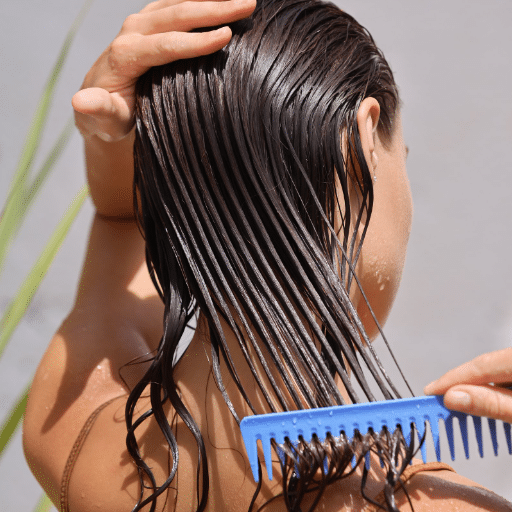
Hair oiling frequency largely depends on hair type, scalp condition, and preference. For dry or normal hair, it is adequate to oil one or two times a week. In the case of an oily scalp, one may undergo oiling once every one or two weeks; otherwise, too much buildup can occur. Leaving the oil on at least for a few hours before washing or doing so overnight will allow for deep penetration, more delivery of benefits, and/or everything because heavy application of the oil, done overnight, would be too much for some hair types. Consistency is important, so it is beneficial to establish a routine that best caters to your hair’s particular needs.
Determining the Right Frequency for Your Hair Type
An ideal oiling schedule is established by first knowing the hair type and specific requirements. For my dry scalp, I find that twice a week works for adequate oiling, nutrition, and hydration. When my scalp turns oilier, though, I reduce it to just once every couple of weeks to prevent the buildup. I sometimes apply the oil just a few hours prior to washing to give it an injection of nourishment during that period, or leave the oil in overnight for deeper penetration. The essentials of this routine keep my hair healthy and manageable, but also allow flexibility to embrace any feeling-based adjustments.
Signs That You May Be Over-Oiling Your Hair
Over-oiling your hair opens it up to problems that can be easily identified. From my experience, my first clear sign is if my scalp feels extraordinarily greasy even after washing – it probably means too much oil is being put on or that it isn’t being rinsed out properly. Then, the limpness or heaviness of your hair is first noticed: over-oiling thickens the hairs, making them weigh less. When I notice increased dandruff or buildup on my scalp, I take that as a signal to give my hair a break from oiling or to wash it more thoroughly! Persistent itching or discomfort post-oiling could be a sign of irritation, meaning I should either reevaluate my routine or consider switching the type of oil I am using.
Incorporating Oil into Your Hair Care Routine
To me, using oils in my hair care begins with identifying the right oil for my hair type and needs. For example, I prefer lightweight oils like argan and grapeseed for fine hair; heavier ones, like coconut or castor oil, go for my coarse or dry hair types. I apply the oil sparingly, focusing on my scalp and the ends of my hair, and make sure I wash it out thoroughly so as not to build up on my hair. If I start to notice dandruff, limpness, or itchiness, I change my routine to oil less frequently or to a different oil. Consistency and attention to how my hair responds help me to work out a healthy and effective regimen for myself.
Which Type of Oil Should You Use for Deep Oiling?

The oil to be used in my deep oil treatment shall depend on my hair type and concern. For dry hair or coarse hair, a heavy oil like coconut or castor, or olive is recommended to deeply hydrate and nourish hair. Lighter oils such as almond, jojoba, or argan would be suitable if you have fine or oily hair, as they moisturize without weighing the hair down. Anyone suffering from dandruff or anything affecting the scalp can benefit from tea-tree oil with an infusion of something anti-inflammatory, for instance, neem. Consider your hair type and its specific needs, and try oils that will suit you best.
Exploring Popular Oils: Coconut, Argan, Almond, and More
Before choosing any oil for my hair, I consider the specific needs of my hair. For dry or damaged hair, coconut oil deep conditions and serves extremely well. If I want to nourish my hair and add shine without the heavy feel, I choose argan oil, rich in vitamin E. Almond oil I use for a bit of light moisture, and of course, it nurtures while helping keep the scalp healthy. Tea tree oil acts wonders on my scalp when it comes to itchiness and dandruff. Learning through trying has made me realize that finding the right oil is all about understanding what my hair truly needs most.
Choosing the Best Hair Oil for Your Hair Needs
In determining which hair oil will be best for your needs, you should first reflect on your hair type and the particular concerns you want addressed. I chiefly recommend argan or coconut oil for dry or damaged hair because they offer intense hydration and repair. Thin hair thrives with the kind of light oils that almond or grapeseed provide-wonderfully moisturising without a heavy feel. Tea tree oil stands out for being effective in treating scalp problems, truly useful when facing dandruff or itchines,s it has both antibacterial and antifungal properties. There’s also the option to go through the ingredients list and choose the oil that is pure and ideally cold-pressed, so you can be sure that your hair is treated with the highest-quality product.
The Role of Natural Oils in Maintaining Healthy Hair
Working natural oils into my hair care routine has made an observable difference in the state and look of my hair. For my fine hair, lighter oils, such as almond or grapeseed, are best because they don’t weigh my hair down but still provide it with moisture and nourishment. When it comes to my scalp feeling itchy and dandruff-y, tea tree oil has been a game-changer for me-owing to its potent antibacterial and antifungal properties. I make sure to always use pure cold-pressed oils because deciding to treat my hair with quality ingredients really made a difference in my hair care routine.
How to Apply Oil to Your Hair and Scalp Effectively?
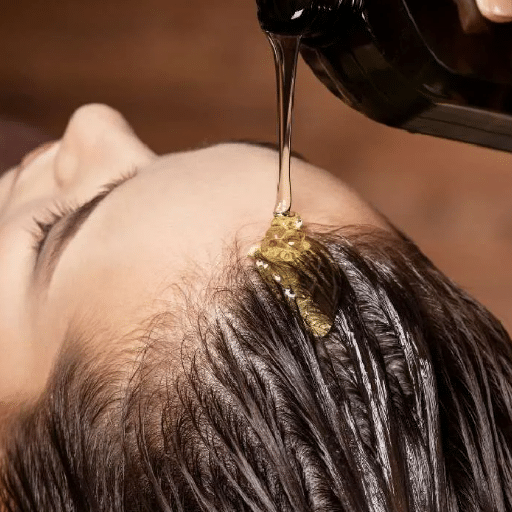
Selecting the right oil is paramount for your hair type and needs. Warm the oil ever so slightly, so that it gets absorbed well. Section the hair to help in the even application of oil. Using fingertips to rub in small circles, gently massage the oil onto the scalp. This aids blood circulation and nourishes the roots. Work the oil down the hair lengths, concentrating on the ends, which are usually dry. Allow the oil to stay for at least 30 minutes, or for better nourishment, leave it overnight. Wash thoroughly using a gentle shampoo, and make sure to do this once a week.
Step-by-Step Guide to Applying Hair Oil
To apply hair oil, I begin by warming up a little oil in my palms to activate it. Then, I part my hair into sections, making sure I am applying it all over evenly. With my fingertips, I give a light circular massage of the oil into my scalp, which helps with blood circulation and nutrition of the roots. I then spread the oil through most of my hair, concentrating especially on the ends since they tend to dry and get damaged more. I leave the oil to stay on my hair for at least 30 minutes, sometimes overnight, for deep conditioning. After that, I rinse well with a gentle shampoo. I repeat this every week to keep my hair healthy and hydrated.
Massaging Techniques to Enhance Oil Penetration
When massaging oil into the scalp, massage with the pads of my fingertips rather than the nails to avoid irritation. Beginning from the crown of the head, I use the pads of my fingertips in small circular motions outward, encouraging blood flow to the scalp and aiding in the penetration of oil to the roots. I keep the pressure gentle and firm to avoid straining the scalp; oil is sometimes warmed to enhance its absorption. Flipping the head upside down for a few minutes during the massage also enhances circulation. This treatment bestows a sense of serenity on the scalp, leaving the hair feeling nourished.
Common Mistakes to Avoid When Oiling Your Hair
One mistake that I avoid is applying too much oil at one go, so that it becomes difficult to wash out and leaves that greasy feeling. I also ensure the oil is really worked through the hair and scalp, instead of just concentrated in one place, which may result in uneven nourishment. Over-massaging the scalp or being too aggressive can irritate the scalp and cause unnecessary strain to the hair. I never leave the oil on too long or overnight, as it could clog pores and contribute to buildup. Finally, I never apply oil to dirty or wet hair, as it lessens the oil’s effectiveness and causes the hair to feel heavy and unclean.
What Are the Best Practices for Washing Out Oil from Your Hair?
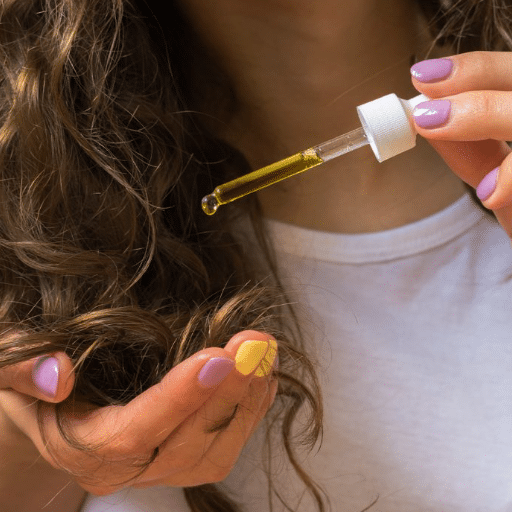
Washing oils from your hair requires a clarifying or mild shampoo to emulsify the oil without stripping your hair of the natural moisture. You apply the shampoo to your scalp and hair before adding any water so that it emulsifies the oil more easily. Then you wash the hair with lukewarm water and may repeat the process depending upon the level of oiliness. Avoid extremely hot water as its adverse effects include drying of the scalp and hair. If milder conditions need to be created, proceed with a suitable lightweight conditioner to restore moisture so that the hair feels soft and clean. Make sure that all residues of the product are thoroughly removed to avoid buildup.
Preparing Your Hair Before Shampooing
Before shampooing, I spend time gently detangling my hair using either a wide-tooth comb or my fingertips. This helps to reduce breakage, apart from ensuring that the shampoo gets evenly applied all over. When it’s feeling dry or prone to tangling, I pour a little pre-shampoo treatment or natural oil (such as coconut or argan oil) to hydrate and protect it before washing. Always making sure to wet the hair nicely with lukewarm water helps to open the cuticle so that the shampoo can work better. The above-mentioned preparation has helped a lot in maintaining my hair’s health and manageability.
Shampooing Techniques to Remove Excess Oil
To wash away excess oil, I apply a small amount of shampoo mostly on my scalp as this is the primary point of oil production, before working it into circular motions with the pads of my fingers to lift oil and buildup, being careful not to irritate the scalp. I then rinse thoroughly in lukewarm water to prevent any residue being left behind that, in turn, will cause buildup. I repeat the procedure if I feel it’s necessary, making sure my hair feels clean and refreshed, but not stripped of its moisture.
Post-Wash Hair Care Tips for Long-lasting Benefits
Post-wash care keeps the hair in good condition by damp drying with a microfiber towel or a cotton t-shirt, minimizing frizz and breakage. Vigorous rubbing is avoided as it will damage the strands. When it’s damp, a lightweight leave-in conditioner or serum will be applied, focusing on the ends, which tend to be dry and prone to split ends. Using heat-styling tools will require the use of a protectant spray from heat. Occasionally, a little bit of hair oil or cream will be applied to lock moisture in if hair feels dry. Air dry as often as possible, just to keep moisture from drying out and brittling a lot with heavy styling. These steps keep the hair nourished, shiny, and manageable till the very next wash.
References
-
Healthline: Hair Oiling Benefits, Choosing Oil, and How to Do It – This article discusses the potential benefits of regular oiling, such as preventing damage from pollution and chemicals, and increasing moisture and luster.
-
Cleveland Clinic: Hair Oiling – 3 Benefits and How To Do It – This source highlights the benefits of hair oiling, including adding moisture and shine, improving split ends, and protecting hair from sun damage.
-
PubMed Central: Hair Oils – Indigenous Knowledge Revisited – A scientific review exploring the historical and therapeutic use of hair oils, along with their effects on hair and scalp health.
Frequently Asked Questions (FAQ)
Q: What are the benefits of oiling hair?
A: Oiling hair provides numerous benefits, including reducing hair loss, preventing hair breakage, nourishing your hair, and strengthening the hair shaft. It also helps improve hair health and provides an essential part of your hair care routine.
Q: How does coconut oil strengthen hair?
A: Coconut oil has a unique affinity for hair, allowing it to penetrate inside the hair shaft effectively. It strengthens hair by reducing protein loss, making your hair more resilient to damage.
Q: Which oil should I use for my hair type?
A: The oil you use depends on your hair type. For dry hair, coconut oil or argan oil can be beneficial. Bhringraj oil is known for its hair treatment properties, and is particularly effective for natural hair and reducing hair fall.
Q: How do I apply oil to my scalp?
A: To apply oil to your scalp, gently massage your scalp using your fingertips in circular motions. This method helps in better absorption of the oil and stimulates blood circulation, promoting hair growth.
Q: Can oil in your hair improve hair growth?
A: Yes, massaging oil into your scalp can improve hair growth by nourishing the hair follicles and reducing hair loss, resulting in healthier and stronger hair over time.
Q: How long should I leave oil in my hair overnight?
A: Leaving oil in your hair overnight allows it to deeply penetrate the hair cuticles and nourish your hair effectively. However, ensure you wash out the oil thoroughly the next morning to avoid oily hair.

